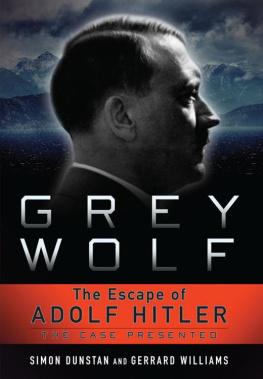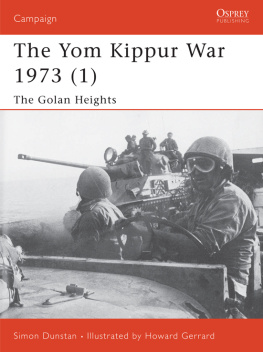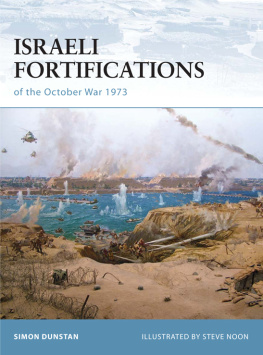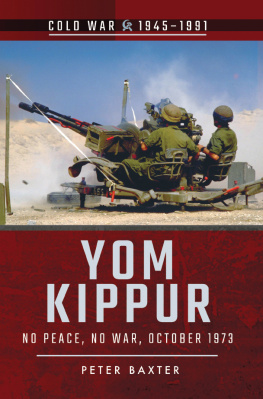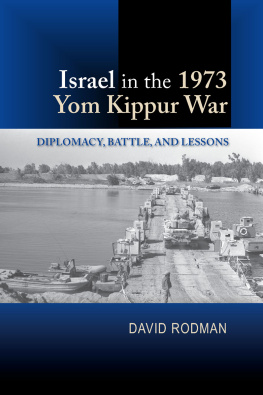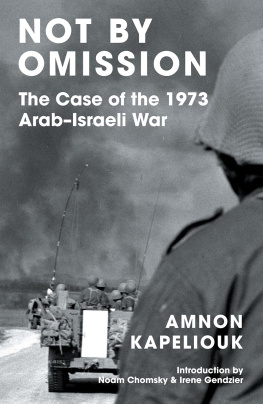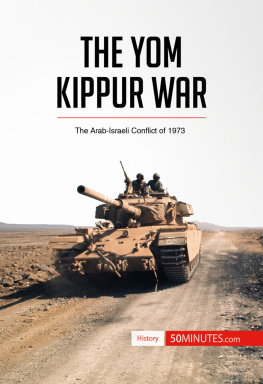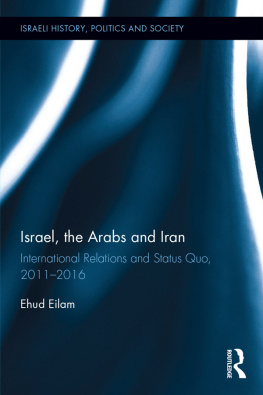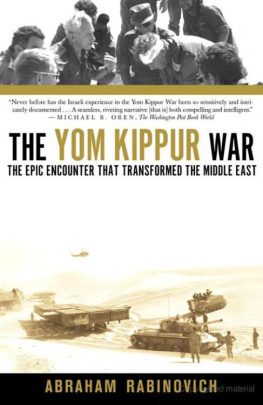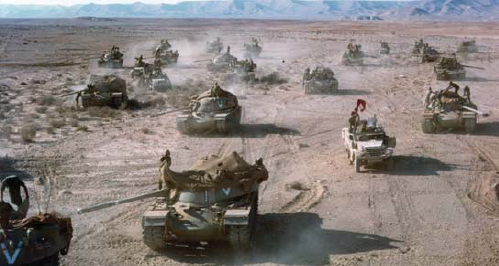The Third Arab-Israeli War of June 1967 was caused by a variety of geopolitical factors. Taken in isolation, none was sufficiently serious to justify armed conflict between countries that were all signatories to the United Nations Charter of 1945. The state of Israel was created on 14 May 1948 following the end of the British Mandate for Palestine that had been created after World War I. In the following days, the armies of five Arab countries, Egypt, Iraq, Jordan, Lebanon and Syria, invaded the territory of the newly founded nation. To the Israelis the First Arab-Israeli War of 194849 was known as the War of Independence. In a desperate war for survival, the 15-month conflict claimed the lives of over 6,000 Israelis or almost one per cent of the total population. Following UN Resolution 181, the remainder of the Palestine Mandate was divided between the Jews and the Arabs with Israel receiving just 13 per cent of the original area of the British Mandate with 60 per cent of that land comprising the arid Negev Desert. Following the conflict, Egypt occupied the Gaza Strip and Transjordan annexed a sizeable area to the west of the Jordan River that became known as the West Bank within the Hashemite Kingdom of Jordan. Fundamental to three of the worlds great religions, Jerusalem remained a divided city. Meanwhile, Israel unilaterally occupied the port of Eilat on the Gulf of Aqaba to give her access to the Red Sea thus splitting the two Arab countries of Egypt and Jordan. All these areas were to become points of serious friction in the years to come. No Arab nation recognized the state of Israel or even its right to exist.
The camouflage nets are unveiled from the M48A2C Pattons of the 79th Tank Battalion of 7th Armored Brigade in their forming-up positions in the Negev Desert just prior to the Six Day War.
| 1952 |
| 23 July | Revolution in Egypt conducted by the armed forces orchestrated by the Free Officers Movement including Colonel Gamal Abd el Nasser and Major Abd el Hakim Amer. |
| 1954 |
| 7 April | Colonel Nasser assumes power from General Muhammad Naguib and becomes President of Egypt in October. |
| 1956 |
| 26 July | President Nasser nationalizes Suez Canal. He also orders the blocking of the Straits of Tiran to Israeli shipping. |
| 29 October | The Second Arab-Israeli War breaks out with the Israel Defense Forces (IDF) conquering the Sinai Peninsula within 100 hours. |
| 31 October | The Anglo-French military expedition to reoccupy the Suez Canal begins but is forced to withdraw following international pressure by the US and USSR. By March 1957, Israel withdraws after the United Nations Emergency Force (UNEF) deploys to Sinai and Gaza. The US guarantees the right of passage for Israeli shipping through the Straits of Tiran. The Suez Canal reopens on 23 March 1957. |
| 1957 |
| 23 February | US memorandum guarantees freedom of passage through the Suez Canal for international shipping. On 23 February a revised memorandum states that US would allow use of force to keep the Straits of Tiran open. However, US later claims that these memoranda were lost. |
| 1959 |
| Summer | Al-Fatah founded in Kuwait by Yasser Arafat and others to conduct terrorist operations inside Israel. |
| 1964 |
| 28 May | The Palestine Liberation Organization (PLO) founded following First Arab Summit in Cairo of 1317 January 1964. The PLO is created as a rival to Fatah to conduct terrorist acts against Israel as Fatah rejects the pan-Arabism of Nasser. |
| 5 June | Israel begins pumping water from the Sea of Galilee for the Israel National Water Carrier to divert water to the arid Negev Desert. |
| 13 September | Second Arab Summit at Alexandria decides on diversion of the headwaters of the Jordan River to deprive Israel of water as well as strengthening regional Arab armies. Arabs reaffirm their aim of destroying Israel. |
| 1965 |
| 2 January | Fatah conducts first sabotage raid in Israel against the Israel National Water Carrier. Between January 1965 and June 1967, Fatah carries out approximately 122 raids of which almost 80 per cent were thwarted by the Israeli security forces. |
| 1966 |
| 9 November | Egypt and Syria sign mutual defence treaty with Egyptian commitment to attack Israel if Israel attacks Syria. |
| 10 November | Three IDF soldiers killed in mine incident on Jordanian border. |
| 13 November | The IDF retaliate with a major raid on Jordanian village of Samu in the West Bank. It results in growing support for the PLO. King Hussein of Jordan demands military action by Egypt. |
| 14 December | Field Marshal Abd el Hakim Amer recommends to Nasser the closing of the Straits of Tiran to Israeli shipping and dismissing the UNEF force from Gaza. |
| 1967 |
| JanuaryMarch | Over 270 border incidents of terrorist attacks and artillery barrages with most originating from Syria cause growing concern in Israel. |
| 7 April | Israel retaliates to Syrian shelling of Demilitarized Zone (DMZ) and Israeli villages with raid by the Israeli Air Force (IAF). An aerial battle develops with the Israelis destroying six Syrian MiG-21s. |
| 13 May | Soviets pass false intelligence to Anwar Sadat in Moscow that Israel is massing 11 brigades on border for attack on Syria, supposedly to take place on 17 May. |
| 14 May | In response, the Egyptian Army deploys two divisions to the Sinai Peninsula. |
| 15 May | Israel celebrates Independence Day sombrely with minimal military presence. |
| 18 May | President Nasser orders the UNEF to leave Gaza. Secretary-General U Thant removes the complete UNEF from the Sinai and Gaza. |
| 20 May | IDF begin mobilization. |
| 23 May | President Nasser closes the Straits of Tiran to Israeli shipping. Egypt reinforces its troop deployment to the Sinai. |
| 30 May | Jordan signs mutual defence pact with Egypt. The IDF complete mobilization. |
| 2 June | General Moshe Dayan joins Israeli cabinet as Minister of Defense. |
| 5 June: Day 1 | 0745hrs: IAF undertakes pre-emptive strike against Egyptian air bases with Operation Moked. |
| 0800hrs: IDF begin ground operations in Sinai. |
| 0945hrs: Jordan begins bombardment of Israeli towns and military targets. |
| 1245hrs: Israel responds with Operation Moked attacking Jordanian, Iraqi and Syrian airbases. |
| 1500hrs: IDF begin ground operations in West Bank with Operation Whip. |
| 6 June: Day 2 |


